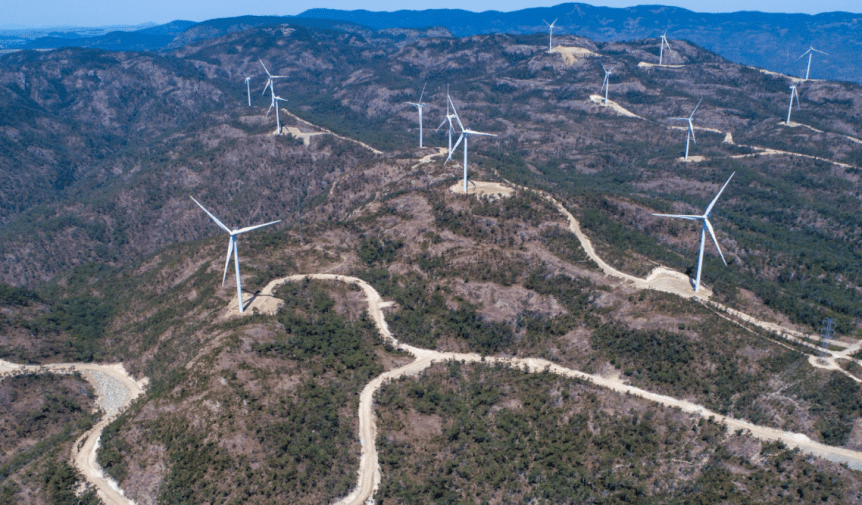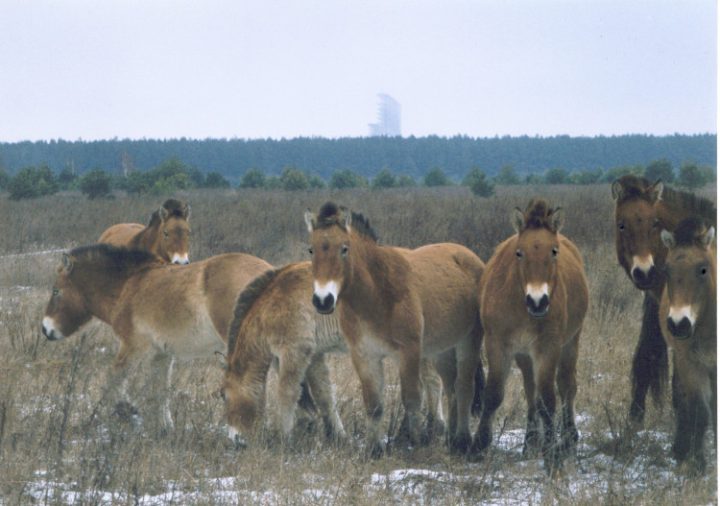The faux environmentalist is easy to spot: they love industrial wind and solar power and couldn’t care less about the unbridalled environmental destruction they cause.
Faced with the rampant slaughter of birds and bats, he or she initially denies the evidence and then pushes the moral equivalence button, claiming that more birds are killed by cats, cars and skyscrapers. Ignoring the fact that cats, cars and tall buildings don’t kill apex predators like Eagles, Hawks and Kites. And also ignoring the fact that cars and skyscrapers deliver benefits in the form of transport and accommodation that make modern, civil societies possible. Whereas, heavily subsidised wind power delivers nothing but chaotically intermittent electricity and rocketing power prices, as a result.
However, slowly, but surely local environmental groups are waking up. No doubt driven by their increasingly troubled consciences, and the reality on the ground, people with a true concern for the environment they live, are finally taking the so-called wind and solar ‘industries’ to task.
Eric Worrall takes a look at the grassroots pushback against the ‘green’ groups that are in thrall and/or the pockets of big wind and big solar.
Green Civil War: Renewable Energy vs Wilderness Preservation
Watts Up With That?
Eric Worrall
21 February 2022
People who actually care about animals and trees are finally pushing back and winning, against the wholesale wilderness destruction renewable energy supporters are attempting to inflict on green spaces.
Tension and trade-offs between protecting biodiversity and avoiding climate change
The Hill
Chris Dunn and Morgan Bazilian
2 February 2022
Land just upstream of the Boundary Waters Canoe Area Wilderness in Minnesota was leased for copper mining — until the plan was recently scrapped.
This mine would have provided a domestic source of minerals crucial for decarbonizing the economy and mitigating climate change, but at great expense — offering a preview of the difficult decisions that lie ahead.
The development of these leases would likely have been a disaster for the wilderness: the odds are high that the sulfide-ore mining would eventually result in acid mine drainage and the leaching of toxic metals into protected waterways on which a diversity of life depends, in an area with a substantial and established recreation economy.
…
To combat climate change, we need such minerals — a lot of them — and quickly.
Take for example, that electric vehicles (EVs) use 10 times more copper than internal combustion vehicles — 183 pounds versus 18-49 pounds. And a 2020 study predicted increased demand “for materials between 2015 and 2060 of 87,000% for EV batteries, 1000% for wind power, and 3000% for solar cells and photovoltaics.” Another study notes that “mineral demand for use in EVs and battery storage is a major force, growing at least thirty times to 2040. Lithium sees the fastest growth, with demand growing by over 40 times…followed by graphite, cobalt and nickel (around 20-25 times).”
All of this reflects a growing conflict between competing — though ultimately connected — environmental concerns. On the one hand, large, open-pit mines are a destructive force on the landscape and a substantial threat to wilderness and waters. On the other, the resources they provide are integral to mitigating climate change. …
The Hill
This push back has been a long time coming.
Some of the bigger conservation societies appear to support the destruction of nature, they claim it is necessary to serve a higher cause.
Wind Power and Birds
By National Audubon Society
21 July 2020
Audubon strongly supports wind energy that is sited and operated properly to avoid, minimize, and mitigate effectively for the impacts on birds, other wildlife, and the places they need now and in the future. To that end, we support the development of wind energy to achieve 100% clean electricity.
Wind power is an important source of renewable, carbon-free energy that is critical to replacing and reducing emissions from fossil fuels such as coal, oil, and natural gas that cause warming of our planet.
All forms of energy—including wind power—have impacts on birds. Audubon’s role is to make sure that key species and high conservation areas for birds are protected as much as possible and in accordance with federal law. We engage in advocacy on federal, state, and local energy planning processes, and on individual utility-scale projects. Audubon also weighs in on federal permitting policies for species protected by the Endangered Species Act, the Bald and Golden Eagle Protection Act, and the Migratory Bird Treaty Act. ,,,
National Audubon Society
This bird society’s qualified support for bird choppers is particularly disgusting, given the amount of online footage we’ve all seen of birds being smashed from the sky by wind turbines, or incinerated by solar concentrators.
The pushback mostly appears to be coming from local groups, rather than big high profile international groups.
Large green organisations like the Audubon Society might be able to kid themselves they are taking a birds eye view of the situation, fool themselves and their members into believing that substantial destruction of wilderness is necessary to preserve the rest.
Local organisations whose members have dedicated their lives to protecting one particular stand of trees or one wetland, are not so philosophical when someone comes along and threatens their patch. They leap into action, and implement a well rehearsed protection plan, even if the new threat comes from fellow greens.
Frankly I hope the local groups win this battle. There is no good reason to ruin vast stretches of wilderness in the service of the green energy fantasy, even if you think CO2 is a problem.
There are better alternatives to renewable energy.
Zero carbon nuclear power is no threat to the wilderness. Nuclear plants have a tiny footprint compared to renewables, acres rather than square miles.
Worst case, even if there is another meltdown, look at the consequences for the wilderness in places where meltdowns have already happened. The areas around Chernobyl and Fukushima are now unrivalled animal habitats, places most humans dare not disturb. What normal national park has that level of protection?
Przewalski’s horses living free in the Chernobyl Exclusion Zone.
Compare what happened in Chernobyl and Fukushima, to a horrific vision of solar panels and wind turbines sitting on a bed of concrete, stretching as far as the eye can see, with barely a plant or animal in sight. Man made deserts of silicon panels, glass and concrete. Because that is what would be required to even attempt to satisfy global energy demand using renewables.
Actually you don’t have to imagine – it is already happening in China. Yet even with man made renewable energy deserts like the photo below, China still generates most of its power from coal.
How much more green space destruction would be required, for China to go 100% renewable? For the world to go 100% renewable?
I’m not a fan of nuclear meltdowns, and I’m not mocking the very real harm the meltdowns did to people and nature. But even the very worst harm the nuclear industry has done to nature, does not come close to what would happen if the world seriously attempted to hit Net Zero using renewable energy.
Now that local wilderness groups have finally found their voice, in my opinion the renewable energy revolution is stuffed, at least in the West.
Only wholesale destruction of pretty much the entire wilderness could have supplied the vast mineral resources and land area renewable energy requires. Local conservation groups have finally decided to reject the destruction of everything they care about, even if the agents of destruction claim they want to save the world with green energy.
Watts Up With That?





The unlicensed Chernobyl reactors were inherently unsafe and incompetently operated. They were built in a country with neither safety culture nor licensing criteria. Like aviation’s Hindenburg, nothing like them will be built again.
Bad as it looked on TV, the Chernobyl fire ultimately caused 28 deaths — according to the United Nations Scientific Committee for the Effects of Atomic Radiation.
Nobody was made ill or killed by the Fukushima Daiichi plants. Japan over cleaned. The dirt there is half as radioactive as the dirt in Denver. But 15,000 Japanese continue to live as refugees in their own country.
Modern reactor designs are walk-away safe. This was proven at EBR-II in 1986. But the Cliton administration shut down what research and development, and closed the reactor, in 1993.
Tesla mega batteries are a mega problem, with pollution from leaking chemicals & fires. Wind turbines are also a major problem, leaking oil, killing high conservation birds like eagles, kites, bats etc, major health concerns from infasound & no benefit to the people, no power when needed. Ban all new turbines and stop subsidizing them NOW!!
I meet these jerks all the time who comment brushing this off among many others things. I’m sure they visit a website to pick up these same canned comments to belch-on about anything. Find them to be brainless. They cannot think for themselves by coming up with something original.
Do you agree with his premise that green energy is not ‘sustainable ‘ on a grid scale or are you just a climate change disciple where ‘fossil fuels’ are the enemy totally ignorant of reality.
Bob, I think you may have interpreted the wrong antecedent for Steve’s pronoun “this” in the first sentence. Then again, he never defined it.
I took Steve’s comment to mean that he often sees jerks brushing off the arguments about wind and solar harming the environment and requiring vast mineral resources.
Jeff you have a point.
Apologies to Steve.